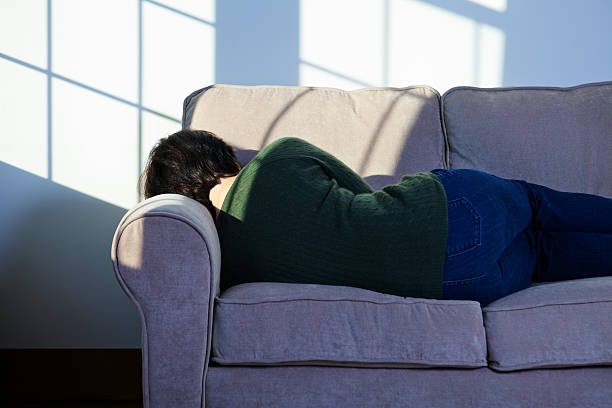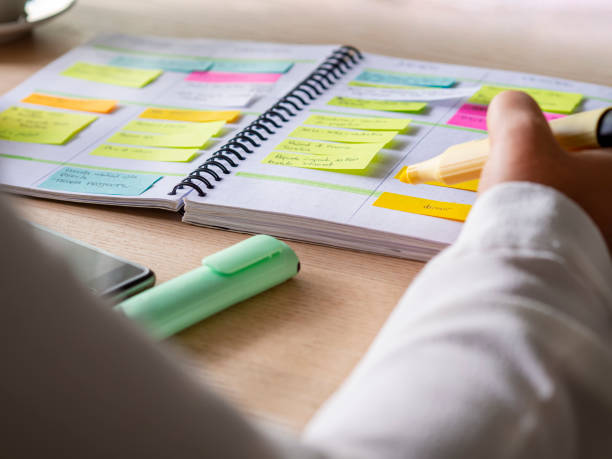
Individuals with ADHD may experience symptoms of depression as a result of the challenges and frustrations associated with managing their ADHD symptoms. The constant struggle to meet expectations, difficulties with focus and organization, and interpersonal issues can contribute to feelings of sadness, low self-esteem, and a sense of inadequacy. When ADHD and depression coexist, the symptoms of each can exacerbate each other, and the overlapping symptoms can be exacerbated.
If you have been diagnosed with ADHD (attention deficit-hyperactivity disorder) you may have also been given a corresponding diagnosis of depression. Lots of ADHD treatment involves treating the symptoms of depression, as well. We provide ADHD therapy in Woodland Hills that utilizes Cognitive Behavioral Therapy (CBT), which works for both ADHD and depression. The goal of CBT is to change thought patterns and narratives that have developed through years of frustration and disappointment. Where before you might have only seen the negative possible outcomes and felt defeated, you would now have a different outlook on your abilities and the future.
Overlapping Symptoms of ADHD and Depression

- Fatigue and a Lack of Energy: Individuals who have both ADHD and depression may experience persistent fatigue and a lack of energy. They may feel tired even after getting adequate rest, and struggle to engage in activities requiring physical or mental effort.
- Feelings of Worthlessness: Individuals who have both ADHD and depression may experience feelings of worthlessness, self-doubt, or excessive guilt. They may have negative thoughts about themselves, their abilities, or their accomplishments, leading to diminished self-esteem.
- Low Motivation: A lack of motivation is common in ADHD and depression. Individuals may have a diminished interest in activities they once enjoyed, struggle to initiate or complete tasks, and have a general sense of apathy toward or disinterest in their surroundings.
3 Ways to Manage Your Symptoms of ADHD & Depression

- Establish a routine:
Establishing a consistent daily routine can provide structure and help manage symptoms of both ADHD and depression. Create a schedule for daily activities, including sleep, meals, work/study time, exercise, and leisure activities. Keep yourself busy without feeling overwhelmed (as much as possible). Stick to the routine as much as possible to provide stability and reduce decision fatigue.
One common difference between depression and ADHD is that people who have ADHD may report feelings of boredom or a lack of interest in things they used to enjoy, but be able to be stimulated by seeing friends or taking on something new. In the case of depression, these same tactics often don’t help much, if at all. If you find that you become depressed with too much time alone, or too much unstructured time, then a routine is a great way to combat that.
A good routine has enough time to achieve practical and pleasurable tasks, as well as time for self-care. We cannot control the world around us, but if we structure our days in a way that works for us, then most of our time will be spent in a functioning routine. Having a routine is also a good way for you to check in with yourself about whether your feelings are related to your ADHD or to depression, as you will be able to tell based on how you feel about your plans.
When you consider your routine, think about the aspects that aren’t flexible. If you have regulated hours at your job that you cannot adjust, then it will fall to you to build your routine around that. Considering a routine means not only determining what you want but also what is possible. For example, if you work a job where you sit all day, you may want to do something right after work that gets your body moving. However, there might be other obligations in your life that make that challenging. On the other hand, stopping at the gym on your commute home might be something that helps you make sure to get it done. If you drive yourself, you may want to keep a gym bag in your trunk so that you never have to worry about being without the proper gym attire. Attaching parts of your routine to other parts can help you to complete tasks or stick to the promises you’ve made to yourself.
Your routine should make space for the things that feel the hardest when you are struggling to regulate your attention, or when you are experiencing depression. If you are someone who loses their appetite when they are in distress, or when they become hyper-focused on something, then factoring food intake into your routine is going to benefit you. If you have to set alarms to remind yourself to eat, utilize that. Maybe you struggle with waiting too long to eat and then wish you had made something. In that case, maybe you and a friend, family member, or partner can choose a day a week to get together and meal prep. That way, you are making it fun, you are utilizing body doubling (which can really help folks with ADHD accomplish tasks), and you will have something in the fridge or freezer to pull out if you suddenly realize you are hungry.
Similarly, if you have trouble sleeping, consider how your routine can facilitate enough sleep for yourself. Making the fundamentals of self-care non-negotiable is the aim, so focus on the trickiest ones for you and begin to adapt your schedule to your own benefit.

- Break Tasks Into Smaller Steps:
Large tasks can feel overwhelming and lead to procrastination or feeling stuck. There is an old saying that the hardest part of a workout is the first step out the door. This is true for beginning a lot of activities.
We tend to spend too much time thinking about everything our task will entail, and talk ourselves out of even beginning. Breaking tasks into smaller, manageable steps will make them more approachable. It is much easier to boost your motivation for a simple task than for an entire project. Focus on completing one step at a time, rewarding yourself after each completion to stay motivated and build momentum.
For example, if you have a pile of laundry to do, create your list: separate laundry, start first load, move first load to dryer, start second load, fold first load, put away first load, fold second load, put away second load. The first part, where you separate your laundry and start the first load, gets all your laundry off the floor and furniture and either into a basket or into the machine. This physical space that you have created will also create mental space. Once you have started the first load, there is nothing more you can do until it is done. In this way, your task is complete. You may choose to do another task, like dishes, in the meantime, or you may choose to relax and meditate, read, watch TV, go for a walk, or something else. Never underestimate the power of being old-fashioned and putting a pen to paper. The reward response we get from crossing something off a list can be a very powerful motivator. The more small pieces you are able to break a job down into, the more entries on your list, and the more times you get to cross something off. Have you ever started a task, realized you needed a list, begun said list, and written down the thing you already did just for the satisfaction of crossing it out? That is your reward center lighting up when you do that, and it feels good!
How you choose to reward yourself for your accomplishments may depend on the task, your priorities, your resources, and your time. You may choose to speak positively to yourself, to begin with. Believe it or not, with the negative messaging you’ve probably been given about your ADHD, even kind words will feel like rewards. In fact, you might feel uncomfortable at first, congratulating yourself for doing something that “shouldn’t be hard”. Affirming your accomplishments will not only give you a positive boost of pride but also help to counteract your instinct to be hard on yourself for struggling.
When it comes to long-term projects, the smaller pieces and the reward system can be a little more complex, but this is also the time to have fun with the process. Where can you logically make breaks in your progress and how would you most like to celebrate? Whether it is a personal project or a project for work, you may want to start at the due date and plan your way back to where you are today. For each piece of the project, focus on breaking it down into the simplest step-by-step method you can, and determine appropriate ways to celebrate.
As ADHD therapists in Woodland Hills, our team members see a lot of people who have trouble regulating attention, who struggle with procrastination, and who feel down on themselves about all the projects they haven’t started or plans they’ve never followed through on. Setting yourself up for success, no matter how small you may think that success is, will help to combat low self-esteem and frustration.

- Prioritize Self-Care:
Prioritizing self-care is essential for managing symptoms of ADHD and depression. Get sufficient sleep, engage in regular physical exercise, and maintain a nourishing diet. Practice relaxation techniques, such as deep breathing, mindfulness, or meditation, to reduce stress and promote emotional well-being. These self-care habits are not for specific people but for everyone. Too often, we think of self-care as “elite”, or something that has to cost a lot of money.
What is actually true is that self-care consists of meeting our basic needs for survival, as well as supporting and improving our mental and physical health.
If you attend therapy for ADHD and/or therapy for depression, you may use tools that help you recognize when you aren’t putting your needs first. These are always beneficial to return to as you move through your days, your weeks, your months, and so on. Understanding that self-care is important and actually taking the proper action can be two different things.
Always begin with your most basic needs; the ones that keep your body going. Sometimes, that will be all you can manage in a day. Those kinds of days happen to everyone. Getting enough rest, being hydrated, moving your body, and eating food that satisfies your body, are all things that make a major difference in your mental state.
You may have some unkind thoughts that you’ve adopted about yourself, thoughts that tell you that these are “not enough”, and you “should be doing more”. Those thoughts neglect to realize that it is only through getting used to taking care of your foundational needs that you will begin to develop the energy and confidence to add more to your plate by way of self-care.
Come up with adjustments to your self-care as needed. If you feel too depressed to shower, you can always wash your face and put on clean clothes, maybe even use body wipes to get you through another day. If you need to leave your hair up and just take a body shower, then do that. Some people you know, people who have never been deeply depressed, will not understand how impossible it can feel to take a shower. Don’t focus on them. Focus on yourself. Speak to yourself about showing yourself care, and which steps you can take to achieve that in some way.
When depression and anxiety coexist, you can begin to feel as if you are constantly worrying about the things you are too depressed to take care of, or depressed about all the things your anxiety is ruining for you. Self-care may look like making space to rest after a social event or taking time to do something fun after you’ve had a particularly anxious day. You probably have a level of acceptance about your ADHD, depression, and anxiety. Rather than trying to wish them away or ignore them, a great way to care for yourself is to plan for them. Be aware that they will probably show up, and make a plan for how you will help yourself feel better during or afterward. Self-care is about meeting yourself where you are and honoring yourself in a way that works for you.
When ADHD and depression coexist (which is more often than not), it can feel as though you are caught in a loop of behaviors leading to other behaviors. You may have experienced thoughts of despair, wondering when it would end. Being able to reach out to people you trust is essential in this process; feelings of hopelessness can cause a lot of damage. A combination of therapies and even medication may be required to help you navigate ADHD and depression, and that’s okay. If it works for you, then it’s a great solution. The key is to listen to yourself, to do the work required, to be honest with yourself, and keep trying. Some days, that will be harder than others. This is where routines and support will always come in handy. You deserve to set yourself up for success.
ADHD Treatment at Embracing You Therapy
ADHD symptoms can be difficult and challenging enough to cause anxiety, depression, and low self-esteem. When ADHD and Depression coexist, utilizing CBT and mindfulness tools becomes more important. ADHD Treatment in our offices in Woodland Hills is designed to identify the unique challenges of your ADHD brain and create action steps that can be easily and effectively integrated into your life.
Contact us today for your complimentary 20-minute phone consultation with our Client Care Coordinator.




